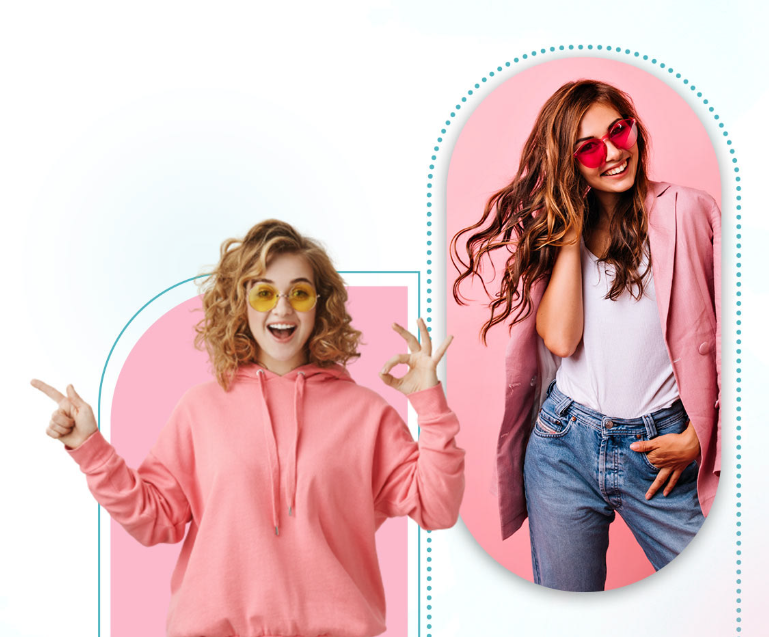In a world where trends come and go faster than ever, personal styling remains your timeless superpower. It’s not just about clothes—it’s about how you express who you are without saying a word. Whether you’re stepping into a boardroom, dressing up for a party, or curating your everyday look, your style speaks before you do.
But personal styling isn’t just for celebrities or fashion influencers. It’s for everyone—because everyone deserves to feel confident, authentic, and empowered in what they wear. Let’s dive into the art of personal styling and how you can build a wardrobe that truly represents you.
What Is Personal Styling?
Personal styling is the process of curating clothing, accessories, and looks that reflect your personality, lifestyle, and body type. It goes beyond following fashion trends—it’s about developing a consistent and intentional style that makes you feel confident and comfortable.
Think of personal styling as storytelling. Your clothes, colors, and accessories are like the words, punctuation, and tone. When used well, they help communicate your individuality, taste, and even your mood.
Why Does Personal Styling Matter?
In a society driven by visual first impressions, how you present yourself matters. Personal styling helps you:
-
Build self-confidence
-
Leave lasting impressions
-
Save time when getting dressed
-
Shop more intentionally
-
Elevate your daily mood
Most importantly, when you love your style, you stop dressing for others and start dressing for yourself.
Key Elements of Personal Styling
Here are the pillars that create a strong foundation for developing your unique style:
1. Know Your Body Type
Understanding your body shape is the first step. Whether you’re hourglass, pear-shaped, rectangle, or apple, dressing to highlight your best features makes a huge difference.
For example:
-
Hourglass: Try belted styles that define the waist.
-
Pear: Highlight your upper body with detailed tops and keep bottoms simple.
-
Rectangle: Create curves with ruffles or peplum tops.
-
Apple: Opt for A-line dresses and avoid clingy fabrics around the midsection.
Remember, every body is a good body, and the goal is to enhance—not hide—your natural shape.
2. Discover Your Color Palette
Certain colors can make your skin glow while others can wash you out. Find out if you’re warm, cool, or neutral-toned. Once you know your ideal shades, curating outfits becomes easier and more flattering.
Warm tones: earth colors like mustard, terracotta, olive
Cool tones: jewel tones like emerald, navy, lavender
Neutral tones: beige, black, grey, white (safe for most)
You can also experiment with color psychology: red for power, blue for trust, green for freshness, etc.
3. Identify Your Personal Style Category
Your style might fall under one or more of these categories:
-
Classic: Timeless pieces like blazers, button-downs, and neutral palettes.
-
Bohemian: Flowy fabrics, earthy tones, and ethnic prints.
-
Minimalist: Clean lines, solid colors, and effortless combinations.
-
Street Style: Bold, edgy, often with oversized elements or sneakers.
-
Glam: Sequins, shimmer, dramatic cuts, and statement pieces.
You don’t have to box yourself in—mix and match styles until you find your own aesthetic.
4. Build a Capsule Wardrobe
A capsule wardrobe includes a set of versatile pieces that you can mix and match effortlessly. Think of items like:
-
A good pair of jeans
-
A white button-down shirt
-
A black blazer
-
A basic tee
-
Neutral shoes
-
Statement accessories
This minimizes daily decision fatigue and keeps your wardrobe organized and efficient.
How to Elevate Your Personal Style
Even with basics in place, small tweaks can take your personal styling to the next level:
✔️ Invest in Accessories
Belts, scarves, jewelry, sunglasses, and bags add personality. Even a basic outfit can look chic with the right accessories.
✔️ Layer Like a Pro
Layering isn’t just functional—it adds depth to your outfit. Combine textures like denim + cotton, leather + knit, or silk + wool.
✔️ Play with Proportions
Experiment with oversized vs. fitted pieces. Pair loose trousers with a tight top or vice versa. This keeps outfits interesting.
✔️ Tailor Your Clothes
A perfectly fitting outfit always looks more expensive. Get your clothes tailored to your body for that polished finish.
✔️ Confidence Is Key
No style works if you don’t own it. Wear everything with confidence—even the bold choices. Fashion is supposed to be fun.
Style Tips for Everyday Scenarios
👩💼 Work Look
Go for a structured blazer, well-fitted pants, and a soft blouse. Add minimalist jewelry and a sleek bun for a professional vibe.
☕ Casual Brunch
Try high-waisted jeans, a crop top or tucked tee, sneakers, and a sling bag. Add a pop of color with sunglasses or a printed scarf.
💃 Evening Out
Slip into a sleek dress or co-ord set. Pair with heels, a clutch, and bold lipstick. Confidence is your best accessory here!
Final Thoughts
Personal styling isn’t about copying others or chasing trends—it’s about curating looks that represent you. It’s a process of self-discovery where your wardrobe evolves as you do. Your style is your signature, and every outfit you wear is a message. So make it intentional, make it authentic—and most importantly, make it yours.
You don’t need a designer wardrobe to look stylish. What you need is self-awareness, creativity, and the courage to wear what feels right for you.

